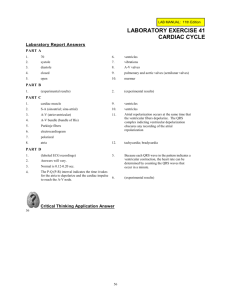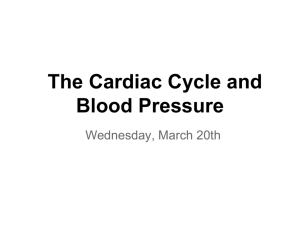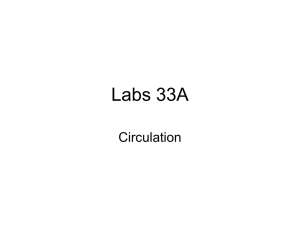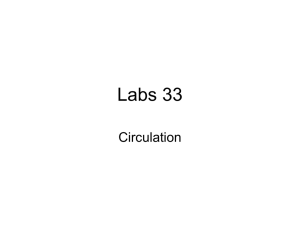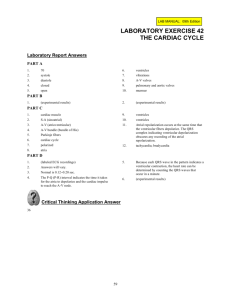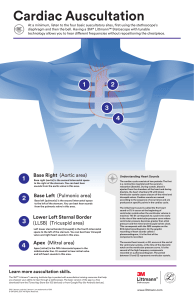Blood Vessel Physiology Human Cardiovascular Physiology: Blood Pressure and Pulse Determinations
advertisement
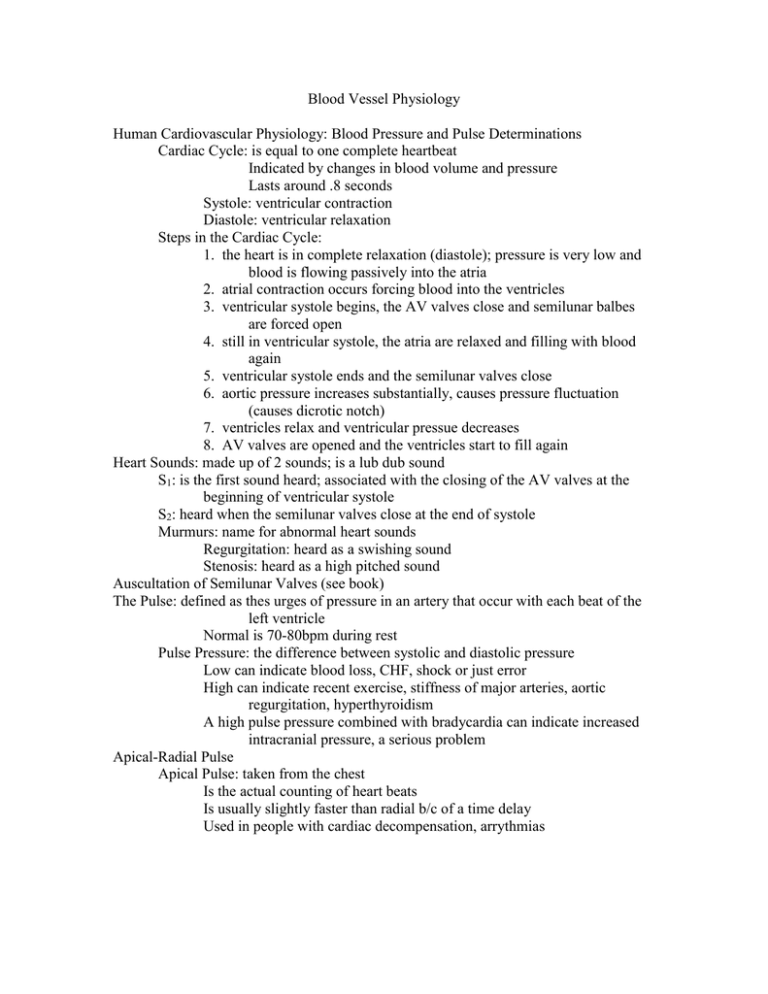
Blood Vessel Physiology Human Cardiovascular Physiology: Blood Pressure and Pulse Determinations Cardiac Cycle: is equal to one complete heartbeat Indicated by changes in blood volume and pressure Lasts around .8 seconds Systole: ventricular contraction Diastole: ventricular relaxation Steps in the Cardiac Cycle: 1. the heart is in complete relaxation (diastole); pressure is very low and blood is flowing passively into the atria 2. atrial contraction occurs forcing blood into the ventricles 3. ventricular systole begins, the AV valves close and semilunar balbes are forced open 4. still in ventricular systole, the atria are relaxed and filling with blood again 5. ventricular systole ends and the semilunar valves close 6. aortic pressure increases substantially, causes pressure fluctuation (causes dicrotic notch) 7. ventricles relax and ventricular pressue decreases 8. AV valves are opened and the ventricles start to fill again Heart Sounds: made up of 2 sounds; is a lub dub sound S1: is the first sound heard; associated with the closing of the AV valves at the beginning of ventricular systole S2: heard when the semilunar valves close at the end of systole Murmurs: name for abnormal heart sounds Regurgitation: heard as a swishing sound Stenosis: heard as a high pitched sound Auscultation of Semilunar Valves (see book) The Pulse: defined as thes urges of pressure in an artery that occur with each beat of the left ventricle Normal is 70-80bpm during rest Pulse Pressure: the difference between systolic and diastolic pressure Low can indicate blood loss, CHF, shock or just error High can indicate recent exercise, stiffness of major arteries, aortic regurgitation, hyperthyroidism A high pulse pressure combined with bradycardia can indicate increased intracranial pressure, a serious problem Apical-Radial Pulse Apical Pulse: taken from the chest Is the actual counting of heart beats Is usually slightly faster than radial b/c of a time delay Used in people with cardiac decompensation, arrythmias Pulse Deficit: a large difference found between apical and radial pulse measurements Indicates impairment of the heart Seen in atrial fibrillation and ectopic heartbeats Blood Pressure Determinations Blood Pressure (BP): the pressure blood applies to the walls of a blood vessel Usually measured in the arteries Systolic Pressure: the pressure in the arteries at the peak of ventricular ejection Diastolic Pressure: pressure during ventricular relaxation Measured in millimeters of mercury Systolic over diastolic Normal (textbook) 120/80mm Hg Varies from person to person within a range Using a Sphygmomanometer to Measure Arterial Blood Pressure Indirectly Sphygmomanometer: blood pressure cuff Sounds of Korotkoff: sounds of the pressure of the blood against the walls of the artery being measured Systolic: first sound you hear (first thump) Diastolic: first silence your hear Hyporeactors: will have a rise/drop of diastolic/systolic pressure from 0-22 points Hyperreactors: will have a rise/drop of 23 or more points Skin Color as an Indicator of Local Circulatory Dynamics Is a good indicator of circulation Hemorrhage will show as pale, cold, moist skin of the extremities and head Obstruction of pulmonary circulation shows as a bluish tint Collateral Blood Flow Collateral Vessels: blood vessels that spontaneously grow to compensate for lack of adequate flow to an organ Can prevent ischemia

